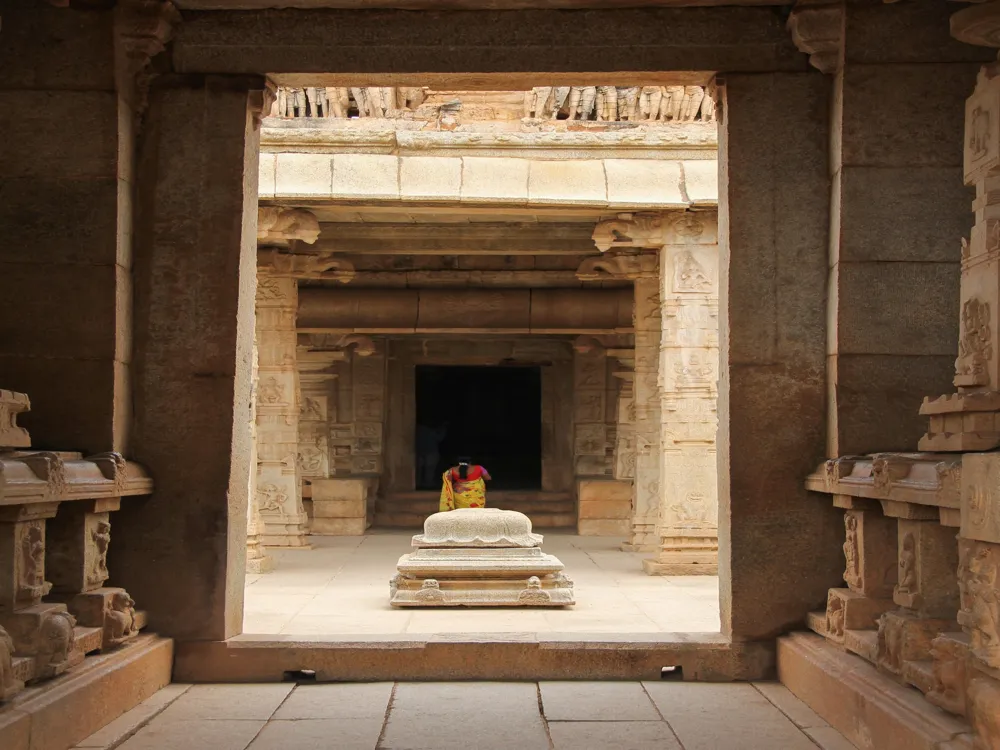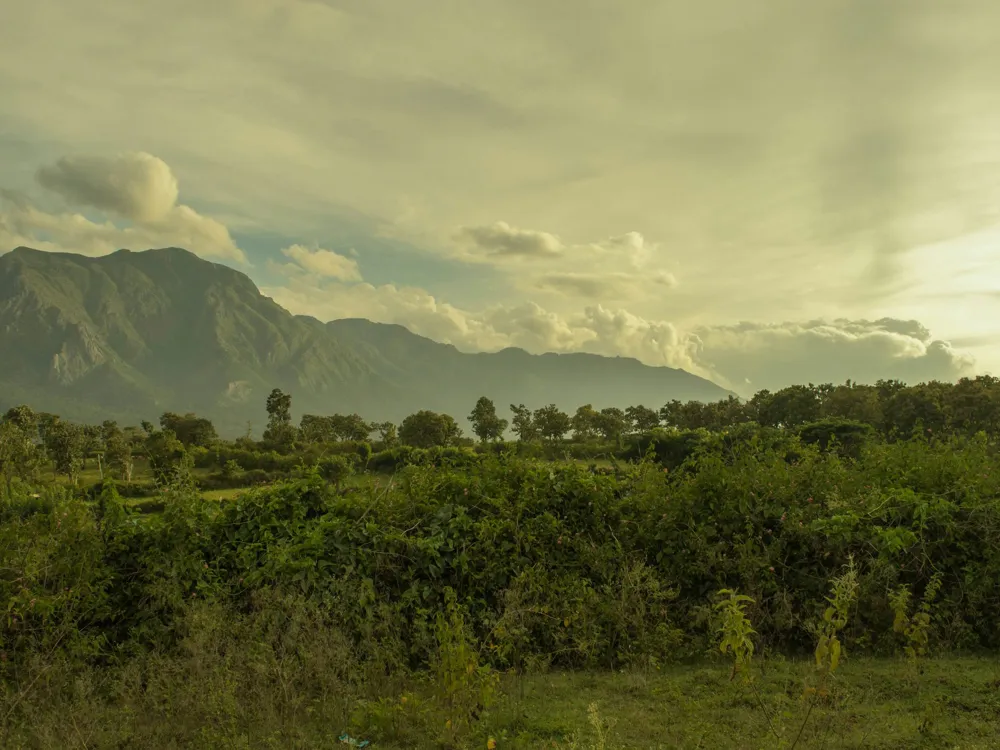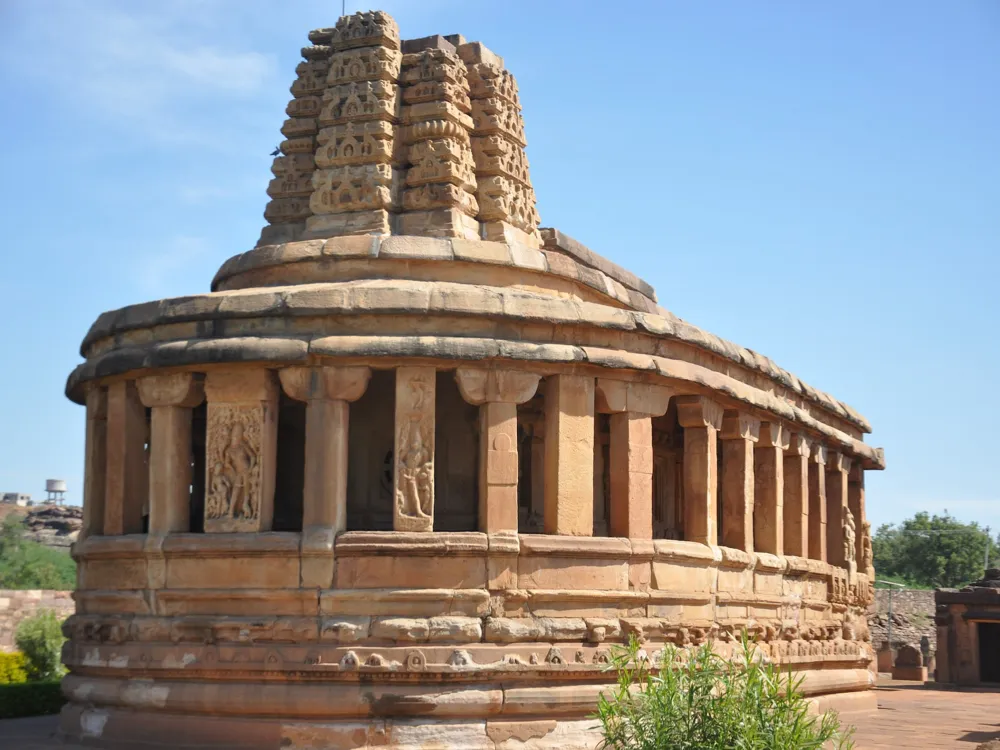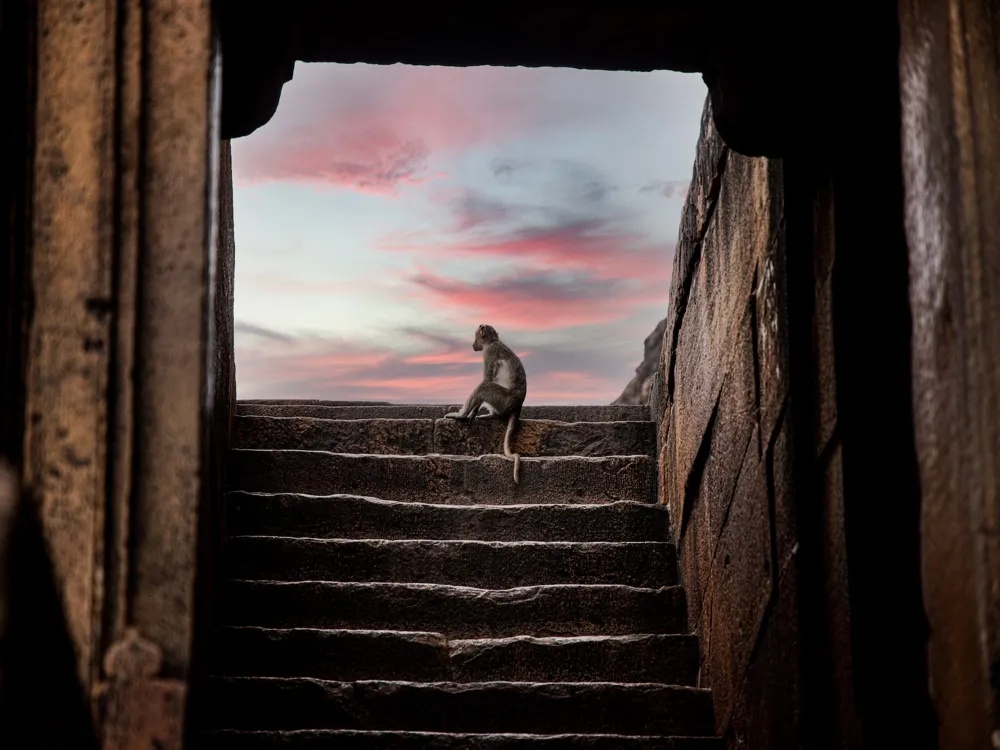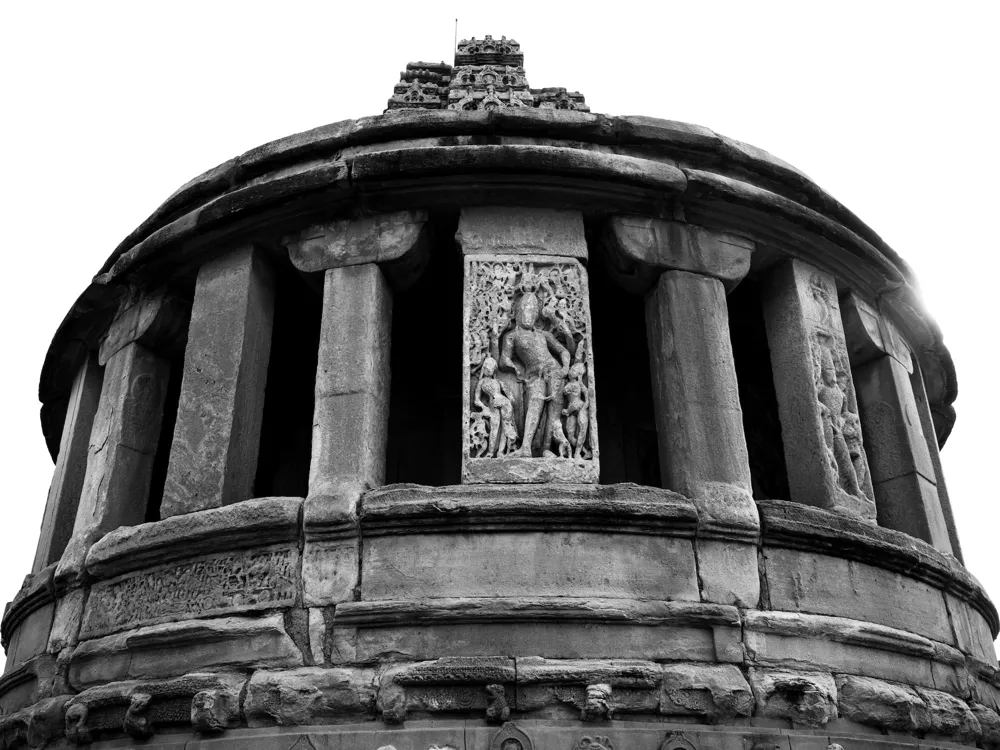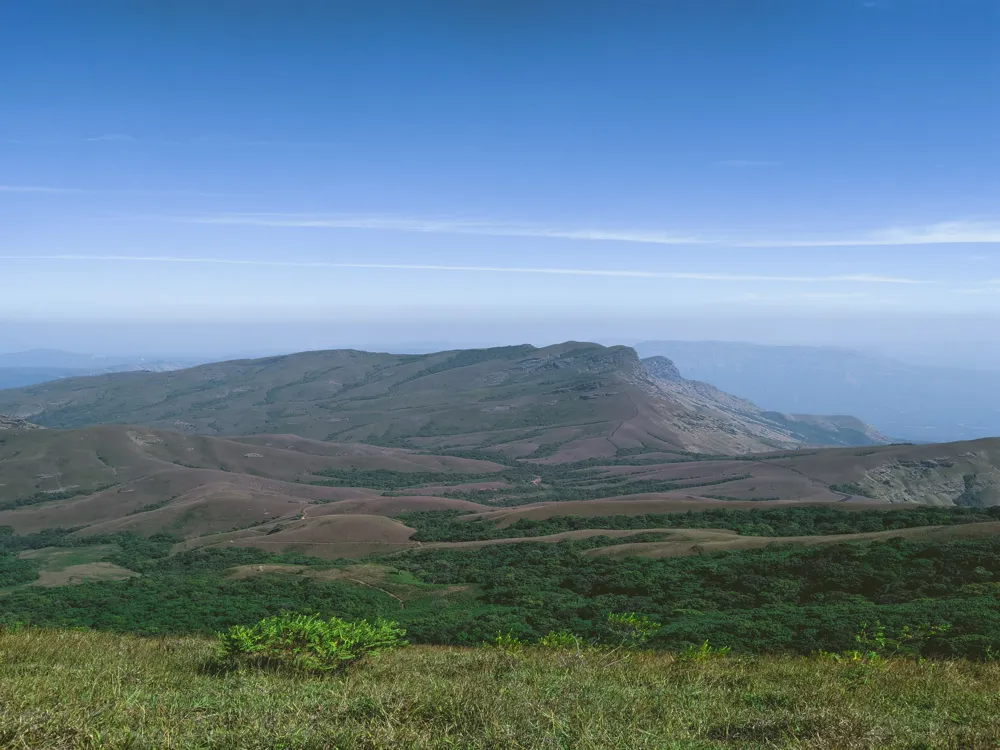Hampi, a UNESCO World Heritage site in Karnataka, India, is renowned for its stunning ruins that date back to the Vijayanagara Empire. Among its most fascinating attractions is the Monolith Bull, also known as Nandi. This colossal structure, located at the east end of the famous Virupaksha Temple, is a significant emblem of Hindu mythology and a masterpiece of Indian sculpture. The Monolith Bull is not just a testament to the religious significance of the area but also an extraordinary example of the architectural prowess of the Vijayanagara artisans.
The bull is a representation of Nandi, the vahana (vehicle) of Lord Shiva, one of the principal deities in Hinduism. The sculpture’s grandeur and size are a sight to behold, with intricate carvings that showcase the high level of craftsmanship of the era. The serene expression of Nandi, coupled with its proportional and detailed anatomy, makes it a remarkable example of Hindu religious art. The setting of the Monolith Bull, amidst the boulder-strewn landscape of Hampi, adds to its mystique, making it a must-visit for anyone exploring the rich cultural tapestry of India.
The architectural brilliance of the Monolith Bull in Hampi is a testament to the advanced skills of the craftsmen of the Vijayanagara Empire. Carved out of a single block of granite, the sculpture stands as an imposing figure of artistic and religious significance. Its dimensions are massive, and the precision with which the artisans have shaped this monolith is a marvel in itself. The detailed carvings on the bull’s body, including the patterns on its head, the depiction of muscles, and the overall proportionality, reflect a deep understanding of both art and anatomy.
The platform on which the Nandi sits is equally impressive. It is adorned with carvings and friezes that depict scenes from Hindu mythology, adding layers of narrative to the monument. The integration of the sculpture with the surrounding architecture, including the nearby Virupaksha Temple, speaks volumes about the planning and vision of the architects. The Monolith Bull’s positioning, facing the shrine of Lord Shiva, is symbolic and carefully thought out, creating a visual and spiritual axis in the temple complex.
The ideal time to visit the Monolith Bull in Hampi is from October to February when the weather is pleasant, making it conducive for exploring the outdoor sites.
Visitors should dress modestly and maintain decorum as the Monolith Bull is part of a sacred site. Photography might be restricted in certain areas, so it’s advisable to check for signs or ask for permission.
Opting for a guided tour can enhance the experience as knowledgeable guides provide insights into the history and architecture of the Monolith Bull and surrounding structures.
Hampi can get quite hot during the day. Carrying water, wearing a hat, and using sunscreen is recommended to avoid dehydration and sunburn.
Engaging with locals respectfully and understanding the local customs and traditions can enrich your visit. Hampi's locals are known for their warm hospitality.
Hampi is accessible via various modes of transportation. The nearest airport is in Bellary, about 60 kilometers away. Visitors can also reach Hampi by train, with the nearest railway station being Hospet, which is about 13 kilometers from Hampi. Regular bus services are available from major cities like Bangalore, Hyderabad, and Goa. Once in Hampi, the Monolith Bull can be reached by hiring local auto-rickshaws or taxis. For a more adventurous experience, renting bicycles or mopeds to explore the ruins at your own pace is also a popular option.
Overview of Monolith Bull in Hampi, Karnataka
Architecture of Monolith Bull
Tips When Visiting Monolith Bull
Best Time to Visit
Respecting the Cultural Site
Guided Tours
Stay Hydrated and Protected
Local Etiquette
How To Reach Monolith Bull
Monolith Bull
Hampi
Karnataka
NaN onwards
View hampi Packages
Weather :
Label : Must Visit
Tags : Monument
Timings : 7:00 AM – 8:00 PM daily
Planning a Trip? Ask Your Question
Hampi Travel Packages
View All Packages For Hampi
Top Hotel Collections for Hampi

Private Pool

Luxury Hotels

5-Star Hotels

Pet Friendly
Top Hotels Near Hampi
Other Top Ranking Places In Hampi
View All Places To Visit In hampi
View hampi Packages
Weather :
Label : Must Visit
Tags : Monument
Timings : 7:00 AM – 8:00 PM daily
Planning a Trip? Ask Your Question
Hampi Travel Packages
View All Packages For Hampi
Top Hotel Collections for Hampi

Private Pool

Luxury Hotels

5-Star Hotels

Pet Friendly








